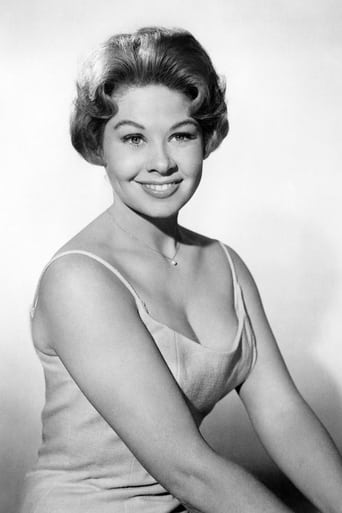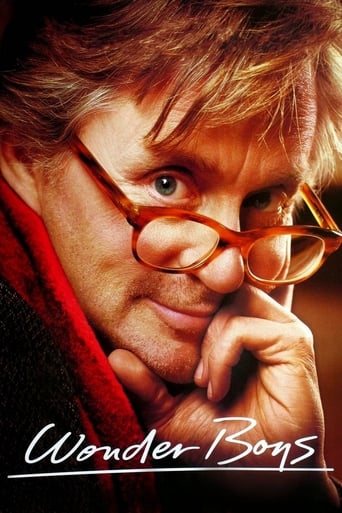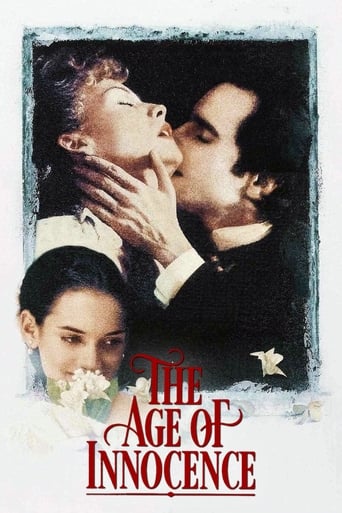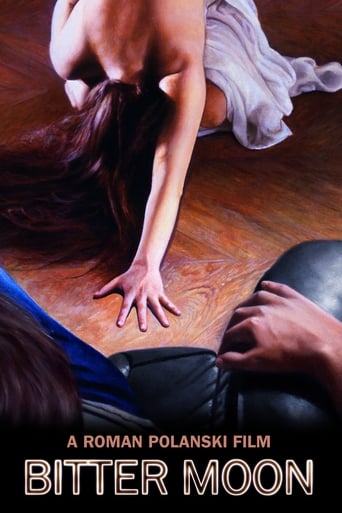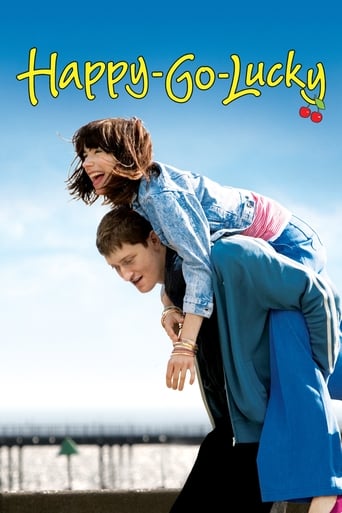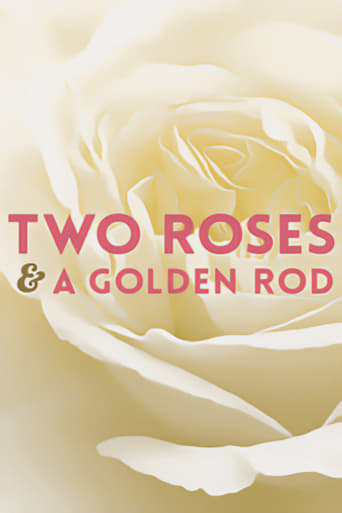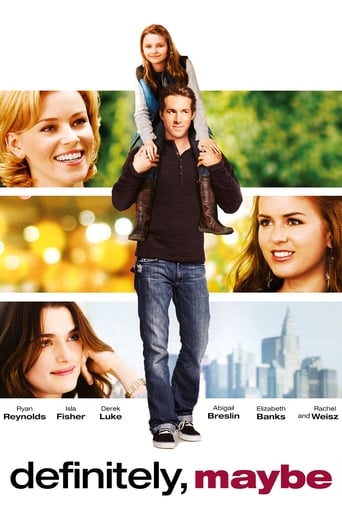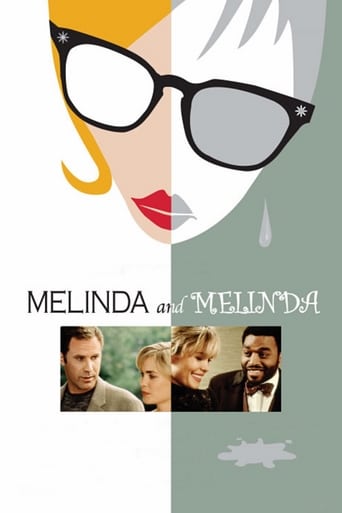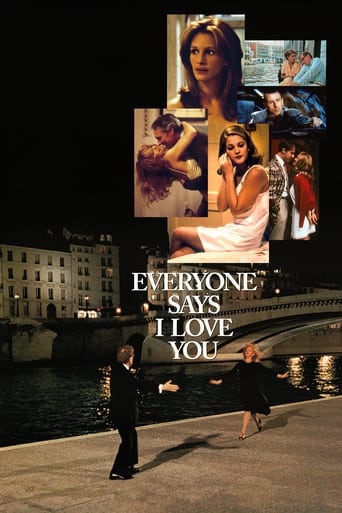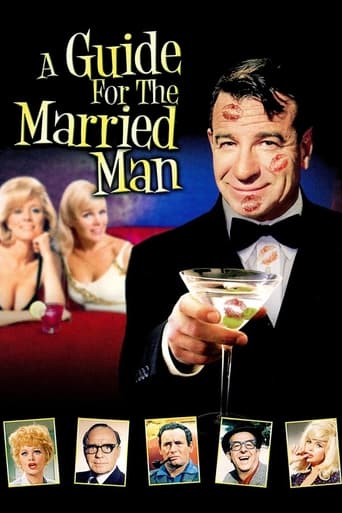
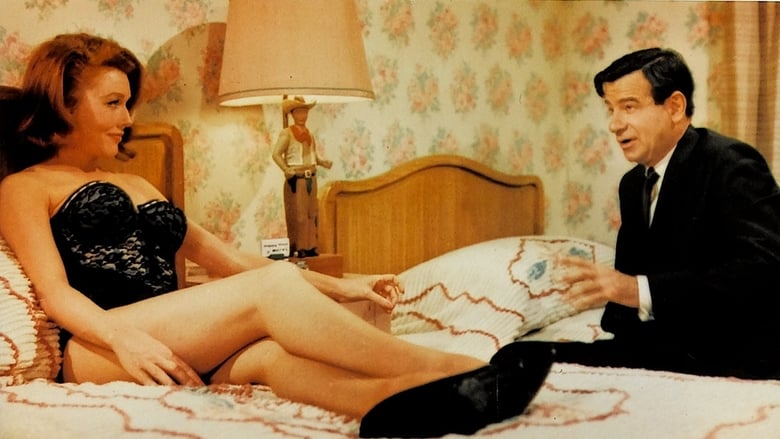
A Guide for the Married Man (1967)
A man gives his friend a series of lessons on how to cheat on one's wife without being caught.
Watch Trailer
Cast


Similar titles
Reviews
This film is closing in on its 50th anniversary and as would be expected, many of the cast who had cameo appearances in A Guide for the Married Man are no longer with us. If this were to be one of their last films then they can rest assured that they went out in style. Walter Matthau plays Paul Manning who is an Investment Counselor who is married with one young daughter so he is a family man. Now Paul is married to his perfect and beautiful stay at home wife named Ruth also played to perfection by Inger Stevens. The film revolves around Paul Manning wanting to fulfill some of his many passionate dreams of having extra marital affairs with the many beautiful women who surround him both at work and around his home. None are more desired by Paul than his next door neighbour Mrs. Irma Johnson played superbly by sexy Sue Ane Langdon, who in this film it would seem Irma's butt received more exposure time in the film than her lovely face and charming personality.Paul receives guidance on how to succeed in his desire to cheat on his wife Ruth, from one of his peers in his office named Edward L Stander played by Robert Morse. (Robert Morse played the same role on Broadway as well). Now Edward has expressed to Paul that he has much successful experience in cheating on his own wife to share with Paul and the pitfalls to avoid that he can share with Paul. Through numerous cameo appearances by top rated stars such as Lucille Ball, Joey Bishop, Jack Benny and Jayne Mansfield to name a few, Paul's coworker and adulterous tutor Ed provides Paul with his wealth of experience in how to get away with his cheating ways by explaining to Paul how some of his known acquaintances met their own demise by simple mistakes. Through these five minute cameo appearances by a list of all-stars we get to see how each of them failed or succeeded with their sexual encounters. One of the more enjoyable cameos was with Carl Reiner travelling completely around the world by air, sea and land, to hook up with his mistress only to be caught on camera by his wife when he finally arrived to hook up with his mistress. The 1960's were simpler times but I still love these comedies that are filled with an all-star cast, five minute cameos, and which usually provide a subtle message to men with wandering eyes. You can dream about your guilty pleasures but if you choose to really act upon them is it worth giving up all that you have today? I give this classic film a 9 out of 10 rating and stand behind this movie theme. So sit back, enjoy the film, and stay true to your wife and family as there is none no better, just as A Guide for the Married Man explains. Loved it!9/10
I think i know what this was intended to be. This story and editing should swing in front of your eyes the same way Gene Kelly used to wing, literally, dancing in his past musicals. I tender the idea, the man uses the image the public has of him, and tries to be coherent with it, behind the camera. The story is about swingers, guys who dance around adversities, schemes to fool their wives, that environment where adultery is fun, and the good guy never falls for it, because deep down, he'll fall for the truth of loving his wife. So we're constantly shifting sets, and than turning to those sets, introducing new characters, telling stories which we don't know for sure happened, and that is made in a kind of frantic (for those days) succession. Kelly tries hard to keep editing up with the story, and i appreciate the effort, but he is not skilled enough to do this properly. This same year, Stanley Donen directed one remarkable piece of filmaking, which i think is essential, 'Two for the Road', he tried similar stuff, but he succeeded in ways Kelly couldn't do. There, Donen managed to control editing and storytelling in coherence. These two minds had been responsible for a great experience, Singin' in the rain. By this film, and "two for the road", we understand they knew they could get somewhere else. Donen did it but this is just a try.My opinion: 2/5 http://www.7eyes.wordpress.com
Let me start off by giving credit where it's due: Gene Kelly and company put a lot of lovely female pulchritude in this one. Not a skinny babe in the bunch. That's a big plus for us dirty old men.However, the script itself is not only misogynistic -- every female character is treated as an object, not a person -- but mostly unfunny. Part of the problem is miscasting. The two male roles should've been reversed: Matthau as the cynical smoothie, and Morse as the naif. Neither actor here is showcased to his best advantage.The cameos are pretty lame too, with comedy greats like Lucille Ball and Jack Benny largely wasted. The best one has Carl Reiner, who's funny as always in a mainly physical comedy role, but the ending of the sketch is weak.The dumbest aspect of the whole enterprise is the central notion of Matthau wanting to cheat on his incredibly gorgeous, hot-to-trot wife, played by knockout Inger Stevens. After an eyeful of her I spent the whole rest of the movie muttering to myself about what an idiot he was.As a time capsule of the 'Swinging Sixties' this might provide some nostalgic amusement. But there are much better sex comedies from the period. Check out Jack Lemmon in HOW TO MURDER YOUR WIFE.
Gene Kelly, who directed this film, was a man that understood clearly timing and movement, as his distinguished career demonstrates. Being behind the camera gives him the opportunity to have his players to put into practice some of his ideas and the result is a film that is a lot of fun and doesn't appear too dated.What Mr. Kelly accomplished with this film was bringing together two charismatic performers at the top of their form. Walter Matthau had been seen in lots of supporting roles before, but as Paul Manning, the bored husband looking for ways of having fun on the side, he is wonderful. The same could be said about Robert Morse, who had been on the New York stage and in other movies. Mr. Morse makes a fantastic contribution with his take of Ed Stander, the man who knew about how to go after the women he wanted without regard of the consequences.Ed Stander puts a bug in Paul Manning's brain about how to have fun away from home. The only thing is, Paul is a man with a normal marriage with an adoring wife, who would not even contemplate in reciprocating what he is trying to do if he follows Ed's advice.The other amazing thing in the film is the different vignettes that are seen throughout the movie. Some of the best and most accomplished actors working in Hollywood have a small part in cameo appearances that illustrate points that Ed would like Paul to put into practice. This way we get to see actors of the caliber of Lucille Ball, Art Carney, Jack Benny, Joey Bishop, Louis Nye, Jayne Mansfield, Phil Silvers, and others playing the dream-like sequences."A Guide for the Married Man" is a film worthy of our time since it takes us back to a more innocent period. Thanks to Mr. Kelly's inspired direction, the film will always be a favorite of mature fans.




